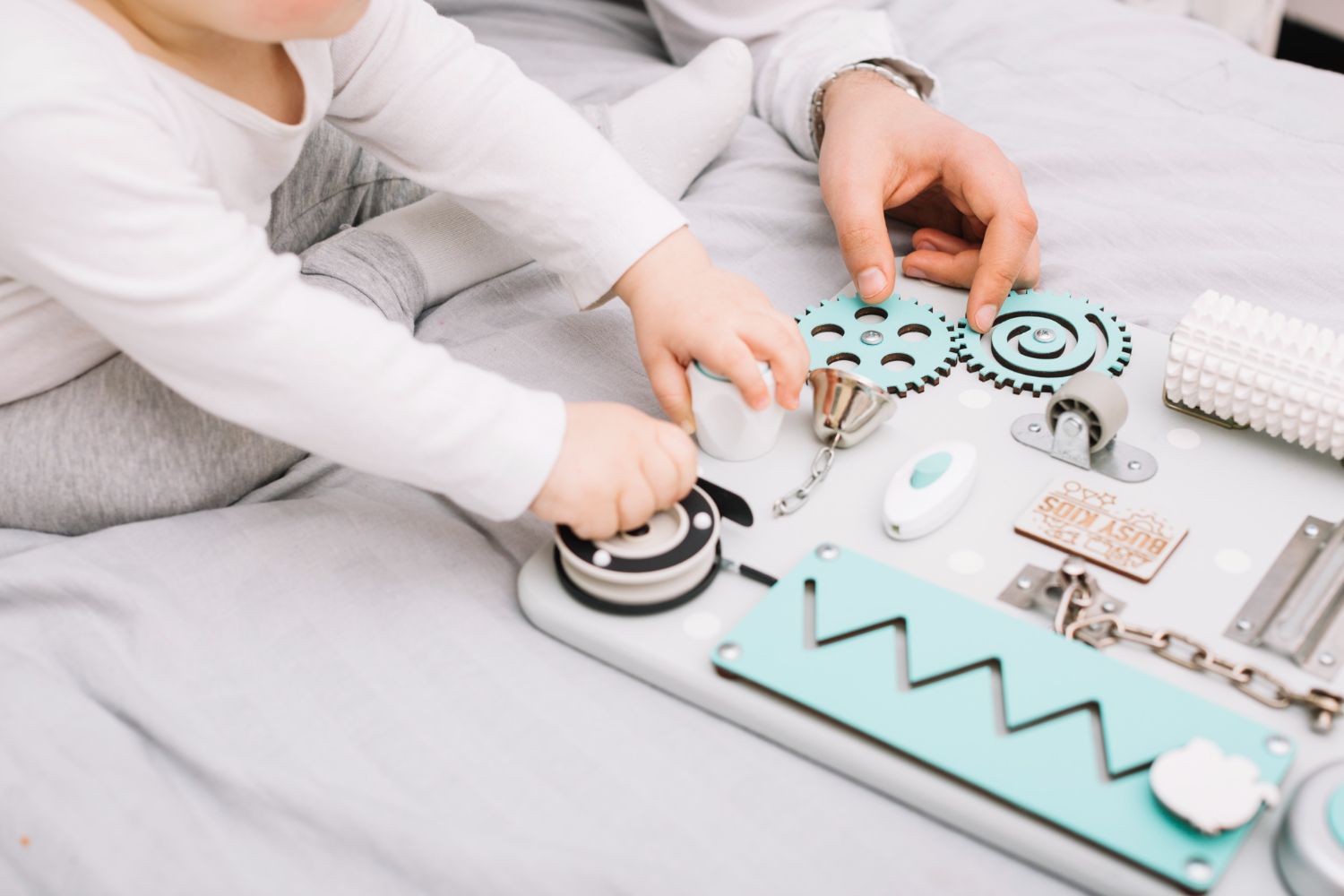Are you curious about your child’s unique way of learning? Does your little one seem to thrive when actively engaging in physical activities, indicating a preference for kinesthetic learning?If so, your child may be a kinesthetic learner.
In this blog post, we’ll explore the ins and outs of the kinesthetic learning style, providing insights, characteristics, and activities tailored for parents seeking to support their kinesthetic learners.
What is Kinesthetic Learning?
Kinesthetic learning, often referred to as the kinesthetic learning style, is a hands-on approach to understanding and processing information. Kinesthetic learners absorb information best through physical activities, movement, and touch. They engage their bodies to comprehend and retain new concepts, making the learning experience more tangible and memorable.
Characteristics of Kinesthetic Learners
- Active Engagement: Kinesthetic learners thrive in hands-on activities and are most engaged when actively participating in the learning process.
- Physical Movement: These learners often benefit from incorporating movement into their studies, such as pacing, tapping, or using hands-on materials.
- Preference for Touch: Kinesthetic learners prefer touching, feeling, and manipulating objects to enhance their understanding of the subject matter.
How Kinesthetic Learners Learn Best
Kinesthetic learners learn best when they can engage in physical activities that align with the subject matter. Incorporating movement, tactile experiences, and hands-on materials into lessons can significantly enhance their understanding and retention.
Example of Kinesthetic Learning
An example of kinesthetic learning could be a math lesson where your child uses physical objects like building blocks or counters to understand addition and subtraction. Manipulating objects helps them grasp mathematical concepts through hands-on experience.
Ideas for Kinesthetic Learners
- Hands-On Science Experiments: Conduct simple science experiments at home to allow your child to explore scientific concepts through touch and movement.
- Role-Playing: Encourage imaginative play or role-playing to help kinesthetic learners act out scenarios, reinforcing lessons in a memorable way.
- Educational Games: Use games that involve physical movement, such as educational board games or interactive apps designed for kinesthetic learners.
20 Hands-on Activities for Kinesthetic and Tactile Learners
Here are 20 hands-on activities for kinesthetic and tactile learners that you can enjoy with your kids
1.Sensory Bins
Prepare containers filled with substances such as rice, beans, or sand.Let your child explore by digging, pouring, and feeling the different textures.
2.Playdough Creations
Mold and shape playdough to enhance fine motor skills. You can also embed small objects for a tactile treasure hunt.
3.Nature Scavenger Hunt
Take a nature walk and encourage your child to collect leaves, rocks, and other natural items. Discuss the textures and properties of each find.
4.Obstacle Course
Set up an indoor or outdoor obstacle course with activities like crawling under tables, jumping over cushions, or balancing on a line.
5.Kinesthetic Math Games
Use movement to teach math concepts. For example, have your child jump or hop the answer to math problems displayed on the floor.
6.Building Structures
Provide materials like building blocks, Legos, or even recycled materials to encourage the creation of three-dimensional structures.
7.DIY Art Projects
Explore different art mediums like finger painting, clay modeling, or using textured materials to create unique artworks.
8.Hopscotch with a Twist
Create a hopscotch grid using textures like fabric, sandpaper, or bubble wrap to add a tactile element to the game.
9.Balloon Volleyball
Play a game of volleyball using balloons instead of a ball. This encourages hand-eye coordination and physical movement.
10.Dance and Learn
Incorporate dance into learning by assigning movements to different concepts. For example, dance for addition and skip for subtraction.
11.Tactile Letter Tracing
Use textured surfaces or materials to help your child trace letters, reinforcing both tactile and kinesthetic learning.
12.Bean Bag Toss
Set up a target and have your child toss bean bags at it. Assign different point values to enhance math skills.
13.Jumping Jack Spelling
Practice spelling words or letters while doing jumping jacks. Each jump represents a letter or a word.
14.DIY Sensory Boards
Create sensory boards with materials like fabric, sandpaper, buttons, and more. Let your child explore the different textures.
15.Body Movement Stories
Create stories where your child acts out the characters and events through movement, fostering imagination and kinesthetic engagement.
16.Scissor Skills Practice
Allow your child to practice cutting various materials like paper, cardboard, or even playdough to develop fine motor skills.
17.Tactile Puzzles
Choose puzzles with textures or 3D elements to engage both tactile and visual senses during problem-solving.
18.Simon Says with a Twist
Play Simon Says using specific movements related to academic concepts, like hopping twice for multiplication or spinning for geography questions.
19.Water Play
Experiment with water-filled activities like pouring, scooping, and playing with water balloons to provide a tactile and sensory experience.
20.DIY Texture Books
Create a small book with different textured materials on each page. Have your child explore and describe the textures as they flip through the book.
These activities not only cater to kinesthetic and tactile learners but also make learning a fun and interactive experience for kids.
Benefits of Kinesthetic Learning
- Improved Retention: Kinesthetic learners tend to retain information better when they actively participate in the learning process.
- Enhanced Concentration: Physical movement helps kinesthetic learners stay focused and attentive during lessons.
- Real-World Application: The hands-on approach allows for a practical understanding of concepts, making it easier for kinesthetic learners to apply their knowledge in real-world scenarios.
Challenges and Support for Kinesthetic Learners
Kinesthetic learners may face challenges in traditional classroom settings that primarily cater to visual and auditory learners. It’s crucial for parents and educators to recognize and support kinesthetic learners by incorporating hands-on activities and allowing movement breaks.
Understanding your child’s learning style, especially if they are a kinesthetic learner, can make a significant difference in their academic journey. By incorporating hands-on activities and supporting their unique needs, parents can help their kinesthetic learners thrive and enjoy the learning process.

